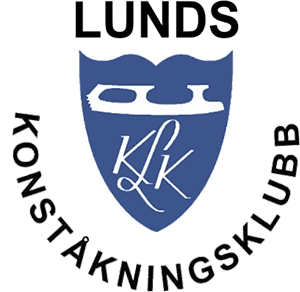Uppvärmningsövningar
Åkarna ska värma upp 15-30 min innan de går på isen. Det är den viktigaste skadeförebyggande åtgärden. Lämpliga uppvärmningsövningar återfinns nedan. Vid behov, diskutera med tränarna.
Jogging
The skater can jog in place or jog around the rink lobby or around the rink area.
Jump rope
Note the skaters body alignment and landing on the balls of the feet.
Flexibility stretches
Neck circles
Slow, controlled rotation of the head to stretch the muscles of the neck; perform clockwise and counterclockwise.
Arm circles
With arms fully extended, rotate in large circles with a slow and controlled movement; perform clockwise and counterclockwise.
Single arm pull
With the free arm, pull the opposite arm , which should be fully extended, across the midline of the chest. This is a shoulder and chest stretch.
Overhead triceps pull
Note the skater reaching behind and pulling the arm at the elbow joint downward slowly. Skater stretch the arms, shoulders and upper back muscle groups.
Arms in to chest
Dynamic movement for the arms, shoulders, upper back, and the chest. The skater should perform approximately five movements.
Trunk rotation
Rotation movement of the trunk. Controlled movement for the torso, hips, and the lower back area.
Crossed leg hamstring stretch
With legs crossed, the skater is slowly reaching with extended arms toward his/her feet. Stretch for the hamstrings and lower back. Switch legs to stretch the opposite leg.
Single quad pull
Balanced stretch of the hip and quadriceps or upper leg.
Calf push
The skater stretches the lower leg. Skater pushing against the wall, with shoulders square, good back alignment, and the rear foot flat on the floor with leg straight.
Achilles toe stretch
With the toe high on the wall, the skater is stretching the lower leg and ankle area.
Straddle sit-n-reach
Skater sits on the floor with legs extended, toes pointing toward the ceiling. The skater reaches for each foot.
Pike reach
The skater, with legs straight and a flat back, reaches for the feet to stretch the hamstrings, lower back and hips area.
Spiral stretch
Position of the skater to simulate a spiral balance position on the floor.
SPECIFIC WARM-UP ACTIVITIES
Ankle bounces
The skater extending the ankle and nice vertical position in the air. Emphasis should be placed on a quick takeoff rom the floor, landing on the balls of the feet. Jump with maximum height, using a quick double arm swing.
Double leg lateral jumps
The skater is performing a low intensity plyometric jump; the emphasis is on extending the ankle, knee, and hip. The skater should bend the knees, drop the hips, and jump to the sid , landing the jump and quickly accelerating into another jump takeoff in opposite direction. Make sure the shoulders and hips are square and that skater involves the arms on take-off.
Single leg skip bounds
This is a power movement where the skater jumps off the single leg by extending the ankle, knee, and hip, using a double arm swing , jumping off the floor with one leg, landing on the same leg, and quickly accelerating into another takeoff from opposite leg. This drill is for maximal vertical height.
Crossed leg torso rotations
The skater is isolating the torsa area by stabilizing the hips and rotating the torso in a twisting motion. Note the "in-air" rotation position of the legs and arms.
Simulated axel take off
The skater simulates an axel takeoff on the floor trying to extend off the takeoff leg, making sure to use an explosive movement of the legs and arms.
Floor landing position
The skater is performing a check-out (landing position) on the floor from a closed rotation position while on the floor. Emphasis should be placed on quickness of the free leg and arms extending out to nice landing position and an appropriate knee bend in the landing leg.
Jump, air position landing
Skater is performing a maximal vertical jump while simulating an in-air position with a single leg landing. Make sure there is a closed air position ( legs tight in the air) before the single leg check out on the floor.
Quarter air turns
These are sequential jump air turns in which skater lands on both feet. The skater begins the air turn in the direction, performs a quarter turn, then jumps back the opposite way. The skater next half turn, and a tree - quarter turn, each time jumping back in opposite direction. Finally, skater makes a full single turn, again jumping back in opposite direction. make sure the arms pull in the extend on the landing and landing take place on the balls of the feet.
Quarter air turns, single leg landing
The skater is performing air turn with a single leg landing. Concentrate on a quick free-leg and arm extension, while allowing for a good knee bend of the landing leg.
Single loop landing
try to make the jump big , using power from legs and arms.


